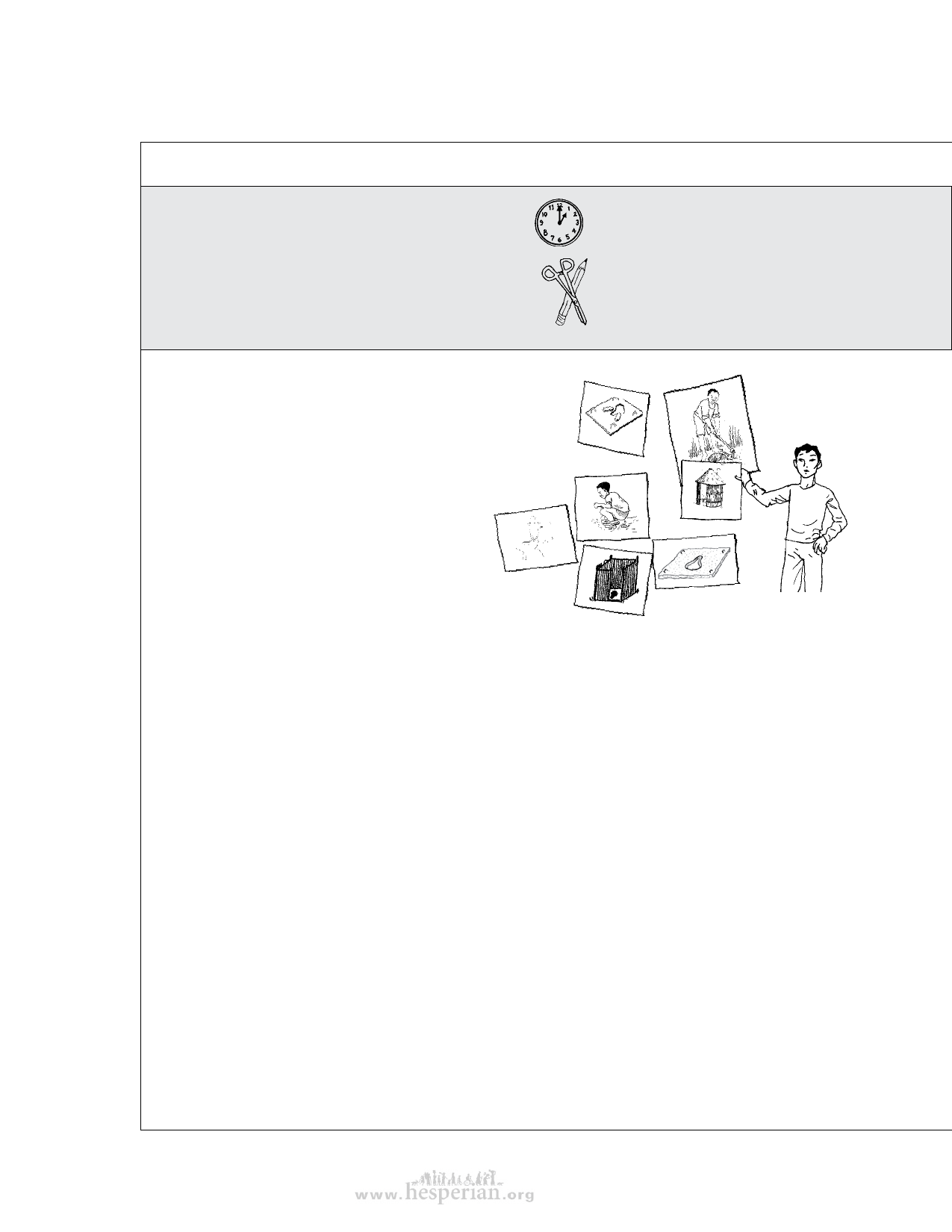
46 Sanitation and Cleanliness for a Healthy Environment
Sanitation steps to healthy communities
Every sanitation method has room for
improvement, and no toilet is right for all
situations. This activity helps people think
about what toilet choices are available and
decide which one is best for them.
Time: 1 to 2 hours
Materials: small drawing
paper, large drawing paper,
colored pens or markers,
sticky tape.
➡ Step 1: Make groups of 5 or so people. Each person
draws a picture of every toilet or way of disposing of
excrement that they know. They should draw their own
toilets, others they have seen, and even pictures of
what people do where there is no toilet. The goal is to
have the group draw a range of options, from the most
simple to the most modern.
➡ Step 2: When the pictures are ready,
each small group arranges their pictures in
order, from what they think are the worst to
the best. These are taped to large sheets of
paper. Each group of pictures is called a set
of sanitation steps.
➡ Step 3: Each group shows its sanitation steps
and tells the reason for the order of the drawings.
What makes one system better and another
worse? Each group member also tells which toilet
he or she uses at home – and which he or she
would like to have.
➡ Step 4: After everyone has shown
their drawings, the group talks
about the difference between all the
sanitation steps.
Ask questions like:
• Does everyone agree about which toilet is worst and which is best?
• Is there one toilet that seems best to everyone?
• Are there some toilets that no one in the group uses? Why?
This can lead to a discussion of the reasons for people’s choices.
• What health benefits are most important?
• What environmental benefits are most important?
• Which toilet would people prefer? Is this because of health reasons, cost, or for
some other reason?
• Would any of the improvements people want require changes in local conditions
or how people think about sanitation? Are there simple things that can be done to
improve what already exists?
• If the group includes both men and women, do their answers show differences in
men and women’s sanitation needs?